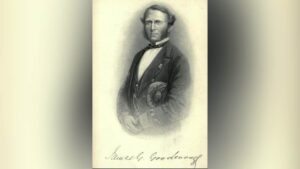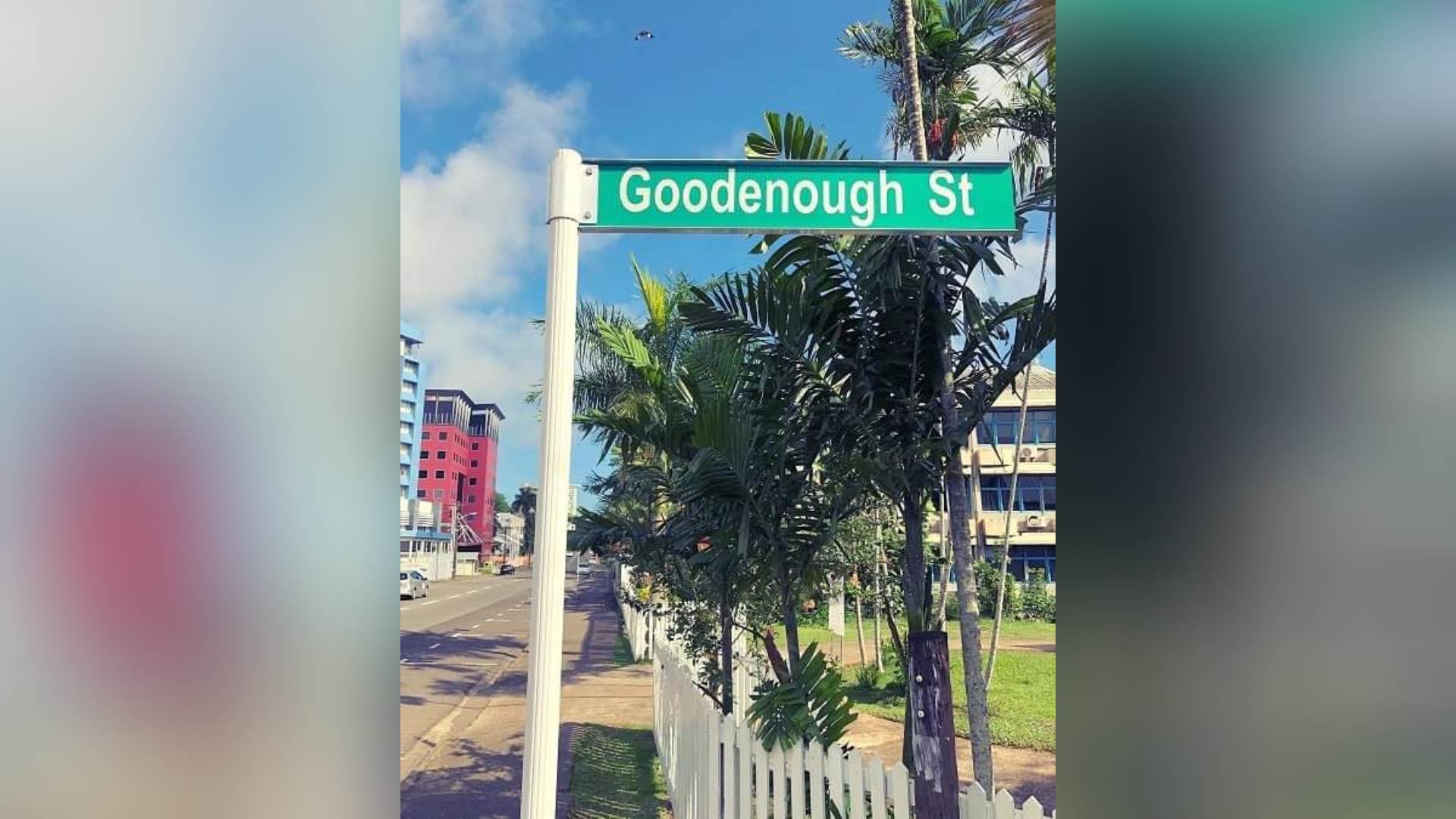Goodenough Street located within central Suva is named after naval officer James Graham Goodenough. According to Geo View, the short and quiet street has a length of 0.17 kilometres or 170 metres.
So who was this Goodenough who gained the right to be named after one of Suva’s streets? His book, ‘Memoir of Commodore J.G Goodenough: With Extracts from His Letters and Journals, edited by his wife Victoria following his death, documents his journey as a young man voyaging the seas as a member of the Royal Navy.
He was born on December 3, 1830 at Stoke Hill near Guildford in Surrey, England and was the son of Edmund Goodenough, dean of Wells, and Frances, née Cockerell.
According to records, following an accident of his godfather, Sir James Graham, who had been first lord of the Admiralty at the time of his christening as a child, led his father to choose the sea as the profession for James.
At a very young age, he showed determination and strength that even his elder siblings were ‘accustomed to abide’ by his decision and desire for justice. They remembered him as an eight-year-old who voluntarily contented to eat dry bread only at the school breakfast room.
This was to make himself tougher and fit to encounter any difficulties set out for him in the profession that had been chosen for him. Goodenough was educated at Westminster School before he entered the navy at the age of 13.
It was on May 7, 1844 that he obtained his appointment in the Royal Navy and he served first in the Pacific in the Collingwood and then in the Cyclops in the African coast between 1848 and 1849.
“In the Collingwood, Good- enough had the advantage of being under officers who materially encouraged and as- sisted him in his endeavours to advance in his profession,” his memoir noted. He then returned to England and entered the Naval College.
In July, 1851 he obtained his lieu- tenants commission and joined the Centaur off the east coast of South America and was also in the Baltic Sea during the Crimean war.
From the China Station to an observer during the American Civil war, Goodenough gained experience with a number of commands and was appointed as Captain of HMS Pearl as Commodore of the Australia station in May 1873.
Along with Consul Edgar Layard, he was briefed on enquiring whether there was a need or possibility of annexing Fiji. “He arrived in Fiji in November 1873 and the next five months were spent, in company with Mr Layard in close and arduous work enquiring and examining into everything that concerns Fiji Islands,” his memoir noted.
“Both with the King (Ratu Cakobau) and Government in the capital, and in cruises to different parts of the group everywhere assembling both the white planters and the native chiefs and hearing most patiently their opinions and views.”
An eyewitness, according to the memoir, shared how he put great physical and mental energy into the work in Fiji by visiting island to island, chief to chief, “holding personal communication with the mountain cannibals”, visiting plantations and “ascertaining things by being present in the moment”.
On April 12, 1874 Goodenough wrote in a private letter how an annexation would be a great advantage and having Fiji as the central station in Polynesia.
“I think that these facts, added to my clear opinion, that if Her Majesty’s Government refuse, we shall have a break up of Government and repudiation of debt and ruin to a good many industrious people,” he said.
“Justify me in saying it is now a positive duty to undertake the government here, both for the sake of whites and natives.” Commodore Goodenough then left Fiji in the month of April. He was described in the book as a man of “middle height, spare and nervous frame, and head generally thrown back with sharp facial features”.
The last chapter of the book was on his last cruise before his demise.

He sailed from Sydney in the Pearl on June 14, to convey to Fiji the newly appointed governor, Sir Arthur Gordon. From Fiji he went on to Rotuma, the New Hebrides and the Santa Cruz group (Solomon Islands).
It was on August 12 1875, while trying to appease the natives on Carlisle Bay, he ended up getting wounded along with his men by poisoned arrows. An extract from his journal entry set the scene of how it slowly happened in the most unexpected moment.
“Casting my eye to the left, I saw a man with a gleaming pair of black eyes fitting an arrow to a string and in an instant just as I was thinking it must be a sham menace and stared him in the face, thud came the arrow into my left side,” Goodenough wrote as one of his final journal entries.
“I shouted to the boats, pulled the arrow out and threw it away and leapt down the beach hearing a flight of arrows pass.
“I ordered the armed men to fire and instantly they fired the arrow flights ceased. My only object in firing was to stop their arrows and to drive them off and I went back to the ship and hoisted the boats up, intending to do nothing to them.”
His men cleaned and dressed his wound where the arrow had struck his rib and though he felt ‘exceedingly well’ that evening proved otherwise.
As the hours passed, tetanus set in and he died on August 20 onboard HMS Pearl, 500 miles away from Sydney. It was said that he was carried out in his hair: “wrapped in blankets and laid on a bed on the quarter-deck, the ships company being all around him”.
“They assembled and he spoke to them at length, taking an affectionate farewell of each, telling them how he had loved them all, how he had seen in each something worthy to be loved. “The commodore had given directions that the Pearl should not go on to Sydney without first sending a telegram to announce his death.
“The news created a profound sensation and the greatest sympathy and interest were evinced by all classes.”
His funeral took place on August 24, 1875 at St Leonard’s cemetery and was survived by his two sons and wife whom he had married in 1864. His widow who later published uncontroversial parts of his journal later became the lady-in-waiting for Queen Victoria.
Today, Goodenough Street in Suva reminds everyone of the contribution given to the Fiji Colony by Goodenough, a man who lived in an era quite different altogether.






